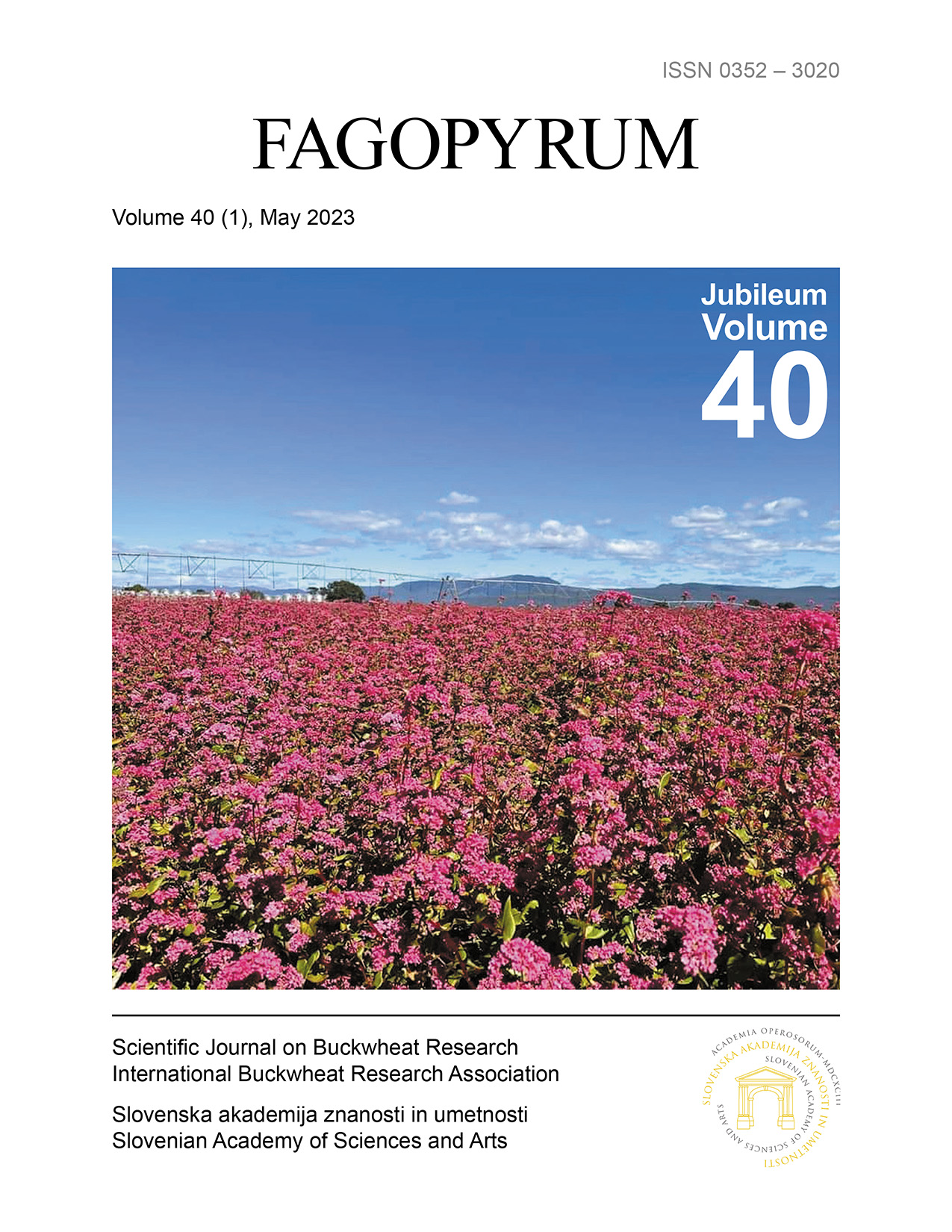Effects of planting density on branching habit in common and Tartary buckwheat
DOI:
https://doi.org/10.3986/fag0030Keywords:
branching habit, common buckwheat, flower cluster, ideotype, planting density, Tartary buckwheatAbstract
This study investigated the effects of planting density on the branching habit of common and Tartary buckwheat. A field experiment was conducted using a split-plot design with three replicates, comparing sparse (67 plants m−2), moderate (111 plants m−2), and dense (222 plants m−2) planting densities in ‘Kitawasesoba’ (common) and ‘Manten-Kirari’ (Tartary) buckwheat varieties. Growth characteristics were examined at the stages of flower bud appearance, full flowering, and maturity. Results revealed that planting density had no significant effect on main stem length but showed significant effects on the number of branches in both species. As planting density increased, the number of branches decreased, with Tartary buckwheat exhibiting more significant changes in response to planting density than common buckwheat. The number of flower clusters on branches also decreased with increasing planting density. These findings suggest a potential role for branching plasticity in adapting to different planting densities while maintaining stable yields and indicate the importance of developing ideotypes with optimal branching habits for both species. This research contributes to a better understanding of buckwheat ideotypes and can contribute to future breeding efforts and crop management practices.

